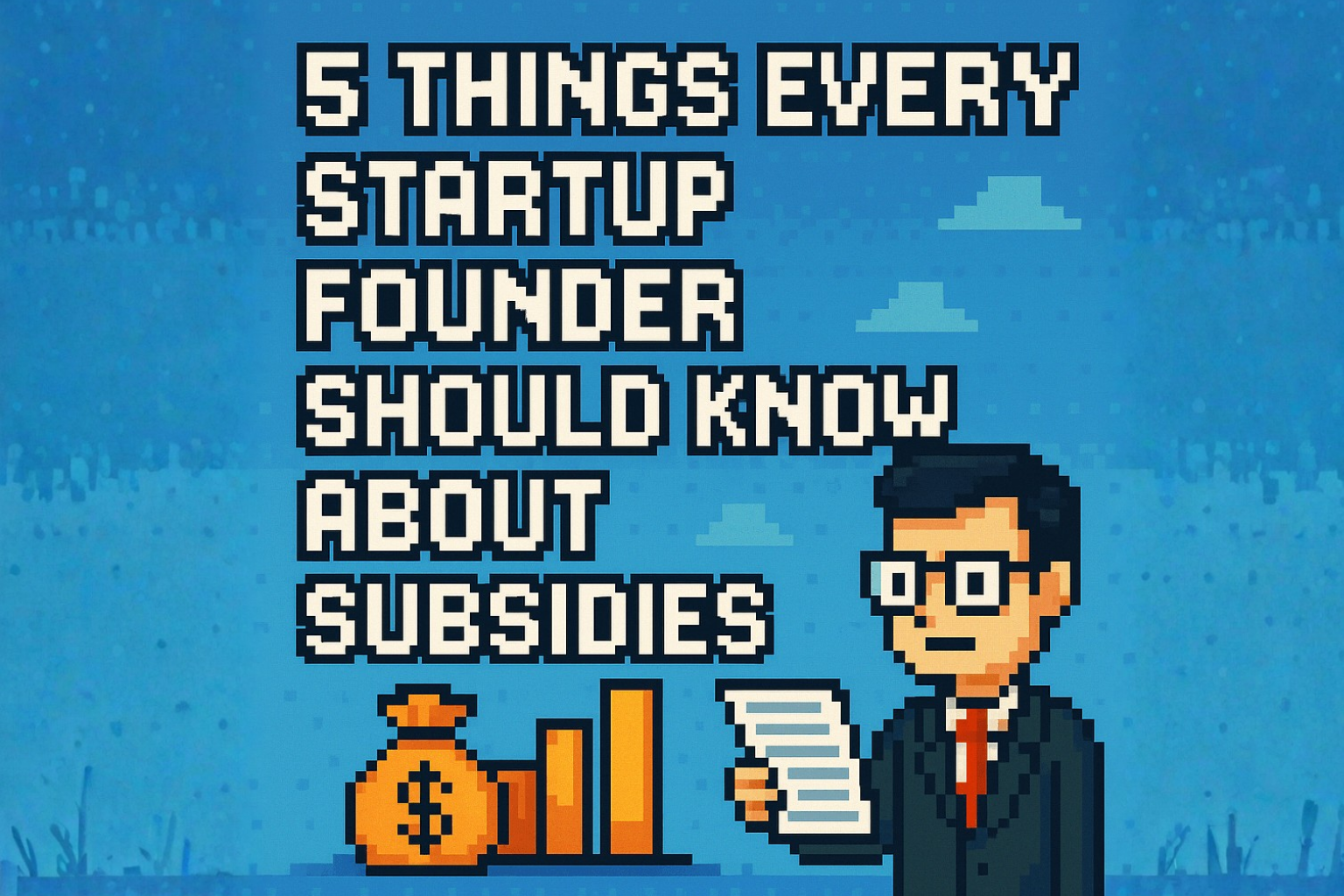For many founders, the world of subsidies feels like a mystery. We have spoken with dozens of entrepreneurs who either see subsidies as a magic pot of money to finance their entire company, or as an impenetrable bureaucratic maze. The truth lies somewhere in between.
Government subsidies and innovation grants can be a powerful tool to accelerate growth, reduce risk, and stretch your resources — but only if you understand how they really work.
Based on monitoring hundreds of government subsidies and funding programs in the Netherlands and across the EU, here are five practical lessons every startup founder should know.
1. Subsidies finance projects, not your entire company
One of the biggest misconceptions is that a subsidy will cover all your costs. In reality, public funding is almost always tied to specific projects. These might include feasibility studies, pilot programs, R&D activities, or sustainability initiatives.
This requires a mindset shift. Instead of pitching your company as one big initiative, break your work into separate projects. Each project can then be positioned as a clear experiment or innovative step. When your project aligns with government priorities such as the energy transition, digitalization, or research and development, your chances of success increase significantly.
General overhead, rent, or daily operations are almost never covered. The smartest strategy is to use subsidies for the riskiest or most innovative projects on your roadmap. These projects then create momentum that benefits the rest of your company.
2. Subsidies stretch your budget, they don’t replace it
Another common misunderstanding is that subsidies eliminate the need for your own funding. Most government subsidies or tax credits cover only part of your costs, typically between 30 and 70 percent. Only in rare cases do they cover everything, and even then strict caps often apply.
This means you must demonstrate that you are willing to co-invest. Whether through your own reserves, external investors, or loans, co-financing is essential. In many ways, subsidies act like leverage: they amplify your budget and reduce financial risk, but only if you also put resources on the table.
Tax incentives work in the same way. They reduce payroll or R&D expenses, but only if you already have those costs in place. For founders, the takeaway is clear: subsidies should never be seen as your sole source of funding. Instead, think of them as a strategic boost that extends your runway and makes innovation more affordable.
3. EU funding is big, but so is the effort
European funding programs such as Horizon Europe or LIFE offer substantial budgets. Winning one of these grants can mean millions in financing, access to international networks, and a credibility boost. But the scale comes with equally big challenges.
Competition is fierce. Some calls attract hundreds of applicants, with only a handful selected. Applications are not simple forms but lengthy, detailed proposals requiring significant preparation, often in collaboration with universities or other companies.
If your startup has the right project and a strong team, EU funding can transform your growth trajectory. But success requires realistic expectations. You must be ready to invest significant time and resources into the application process and be prepared for strict reporting requirements if you are awarded the grant.
4. Cash flow is just as important as approval
Winning a subsidy feels like a victory, but it is only the beginning. Many founders underestimate the impact on cash flow. Subsidies are typically paid out in installments during the project, with a final settlement at the end.
That settlement can bring surprises. If you spent less than planned, you may have to return part of the grant. If you spent more, you will not automatically receive extra funding. This makes careful financial planning essential.
If your spending is not aligned with the subsidy agreement, you risk unpleasant surprises. Some startups even run into liquidity issues because they expected a grant payment earlier than it arrived. The lesson: approval is not enough. Detailed budgeting and cash flow management throughout the project are essential to benefit fully from a subsidy.
5. Finding the right fit and following through is half the battle
The landscape of government subsidies is vast, confusing, and often full of jargon. Many programs look promising at first glance but turn out to be irrelevant for your stage, size, or sector. It is common for founders to waste months chasing the wrong opportunities.
The real challenge is identifying the programs that actually fit your business and then following through with a strong application. Writing a good proposal takes time and requires a clear match with the funder’s goals. Even after approval, you must stay on top of reporting and compliance.
That’s where Subsidies.io comes in. We track hundreds of subsidy programs across the Netherlands and Europe, identify the ones that truly fit your company, and guide you through the application and compliance process.
Curious which subsidy opportunities might be available for you? Get your free subsidy report here.
Final Thoughts
Subsidies will never fund your entire company, but they can unlock serious capital, de-risk innovative projects, and accelerate business growth. With the right expectations, careful planning, and the right projects, subsidies become a powerful part of your startup funding strategy.
For startup founders navigating the world of grants, tax credits, and EU programs, the key is not only knowing what is available but knowing how to use it effectively. With the right support, subsidies can be the catalyst that helps move your business from idea to impact.



.png)
